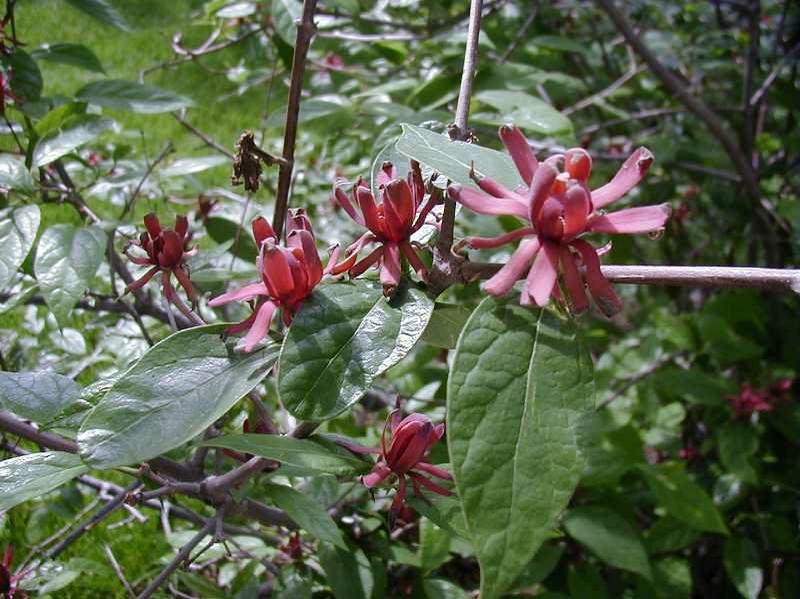Carolina Allspice
Valued for its attractiveness as a native understory shrub, Calcyanthus floridus has beautifully fragrant maroon flowers beginning in late May, lending to its secondary name, sweetshrub. Flowers have been described as having notes of banana, pineapple and strawberry. It tends to sucker and responds well to pruning.
Growing conditions: Calcyanthus floridus is forgiving and easy to grow, tolerant of a wide range of soils and can be grown in part shade.
Size at maturity: 6-10’
Uses: The aromatic nature of this plant is enticing to humans. Bark can be used as a spice — break off a couple twigs, remove bark, dry gently and is perhaps most similar to cinnamon or, yes, allspice! There are some reports of toxicity in flowers and leaves, only in high amounts.
USDA Plant Hardiness Zone: 4-9
Valued for its attractiveness as a native understory shrub, Calcyanthus floridus has beautifully fragrant maroon flowers beginning in late May, lending to its secondary name, sweetshrub. Flowers have been described as having notes of banana, pineapple and strawberry. It tends to sucker and responds well to pruning.
Growing conditions: Calcyanthus floridus is forgiving and easy to grow, tolerant of a wide range of soils and can be grown in part shade.
Size at maturity: 6-10’
Uses: The aromatic nature of this plant is enticing to humans. Bark can be used as a spice — break off a couple twigs, remove bark, dry gently and is perhaps most similar to cinnamon or, yes, allspice! There are some reports of toxicity in flowers and leaves, only in high amounts.
USDA Plant Hardiness Zone: 4-9
Valued for its attractiveness as a native understory shrub, Calcyanthus floridus has beautifully fragrant maroon flowers beginning in late May, lending to its secondary name, sweetshrub. Flowers have been described as having notes of banana, pineapple and strawberry. It tends to sucker and responds well to pruning.
Growing conditions: Calcyanthus floridus is forgiving and easy to grow, tolerant of a wide range of soils and can be grown in part shade.
Size at maturity: 6-10’
Uses: The aromatic nature of this plant is enticing to humans. Bark can be used as a spice — break off a couple twigs, remove bark, dry gently and is perhaps most similar to cinnamon or, yes, allspice! There are some reports of toxicity in flowers and leaves, only in high amounts.
USDA Plant Hardiness Zone: 4-9

